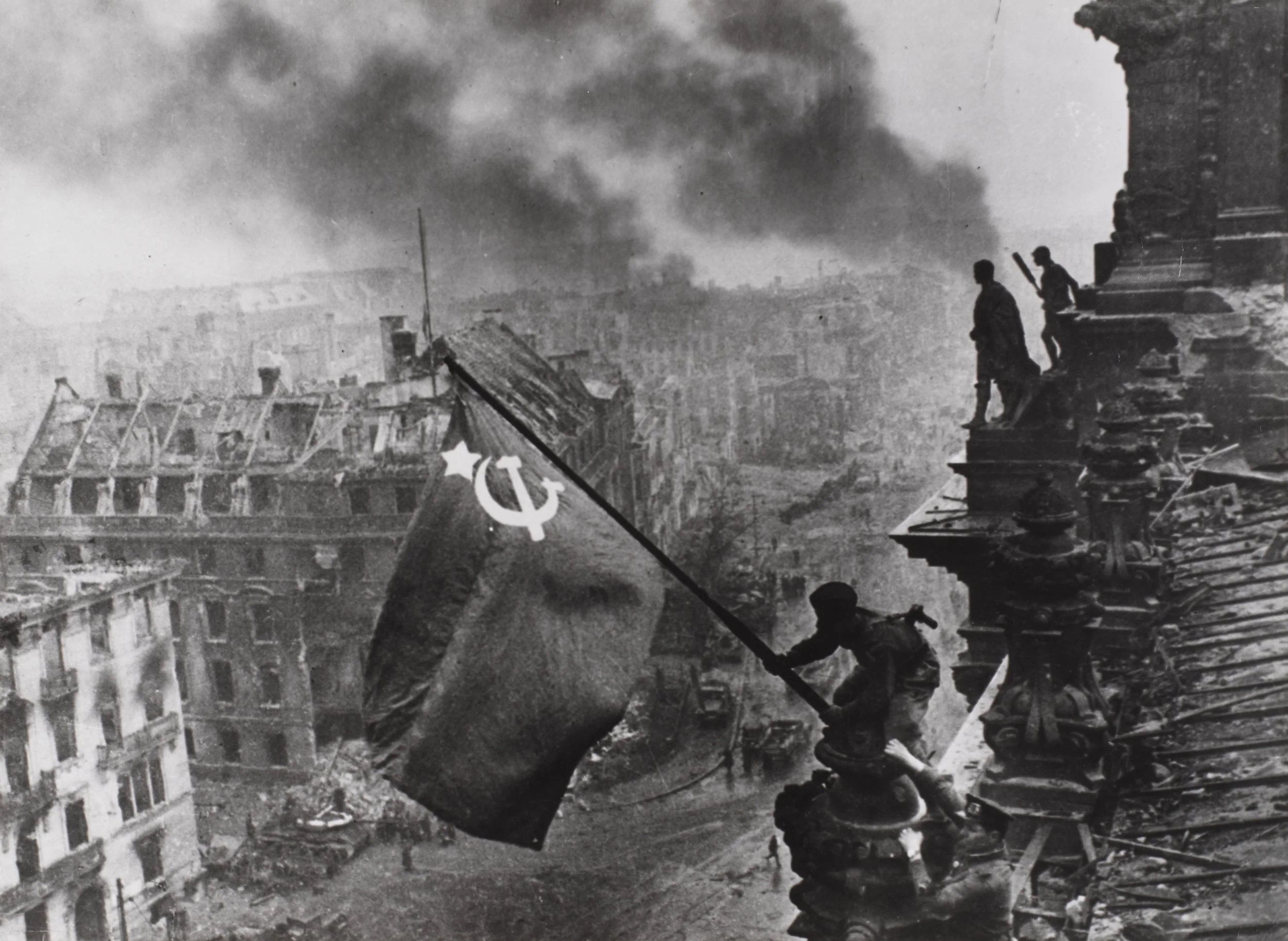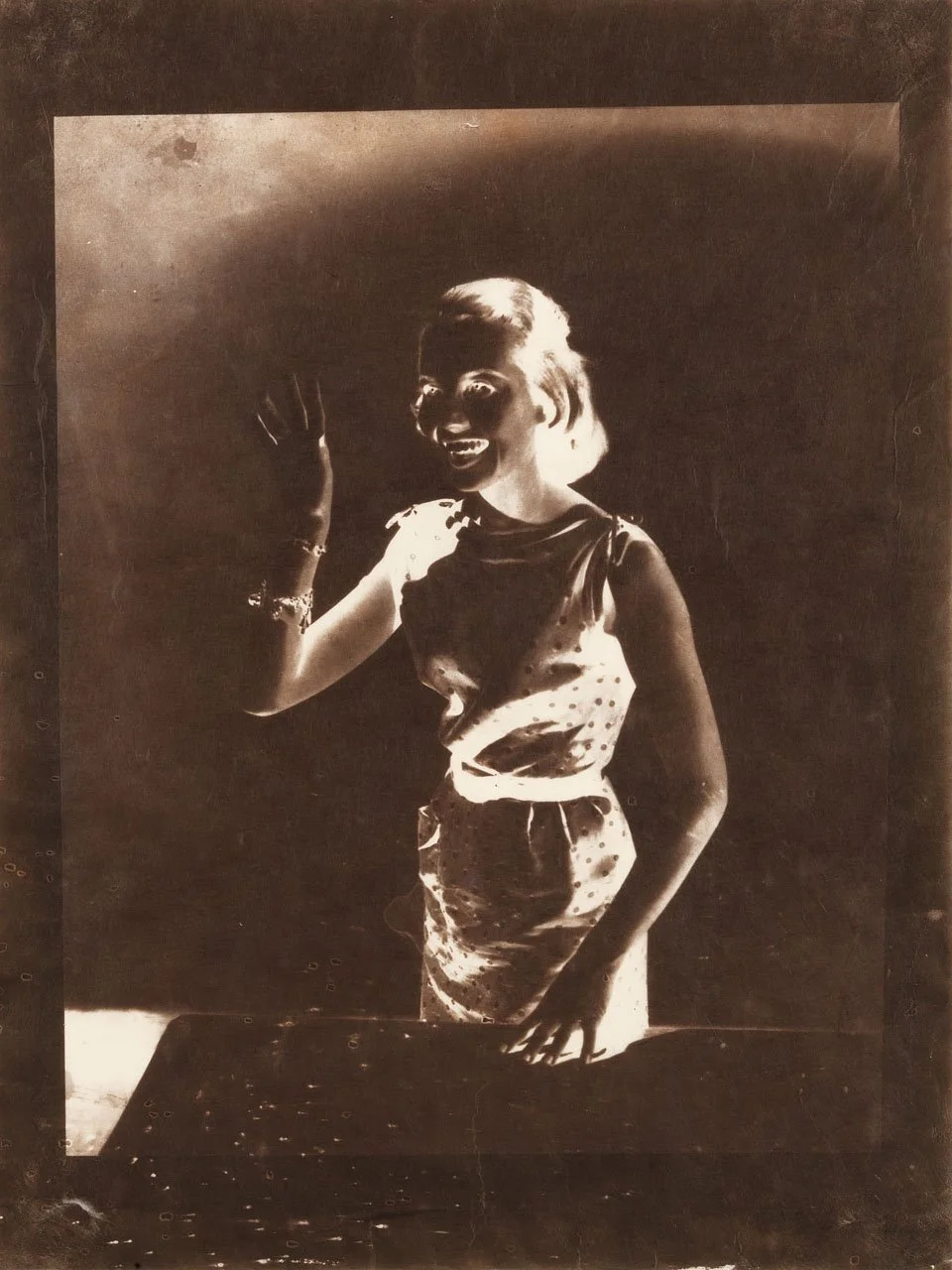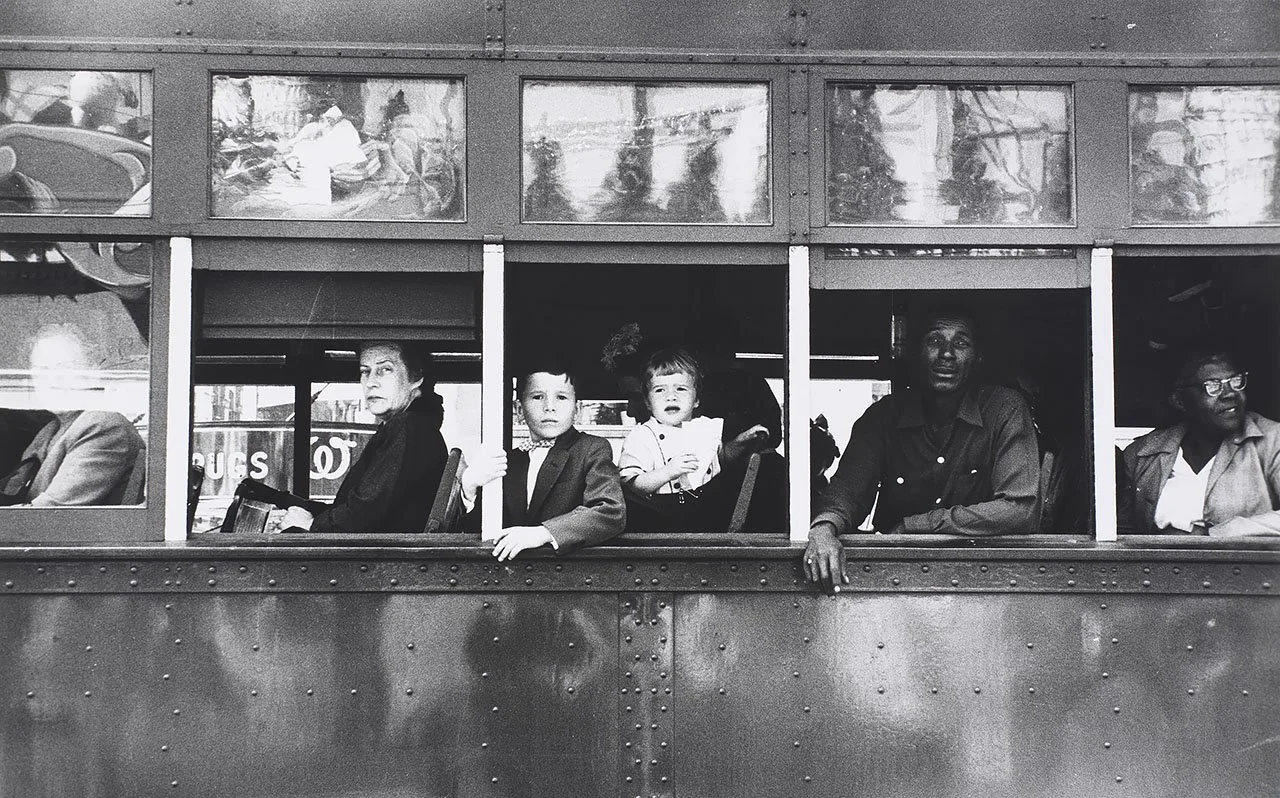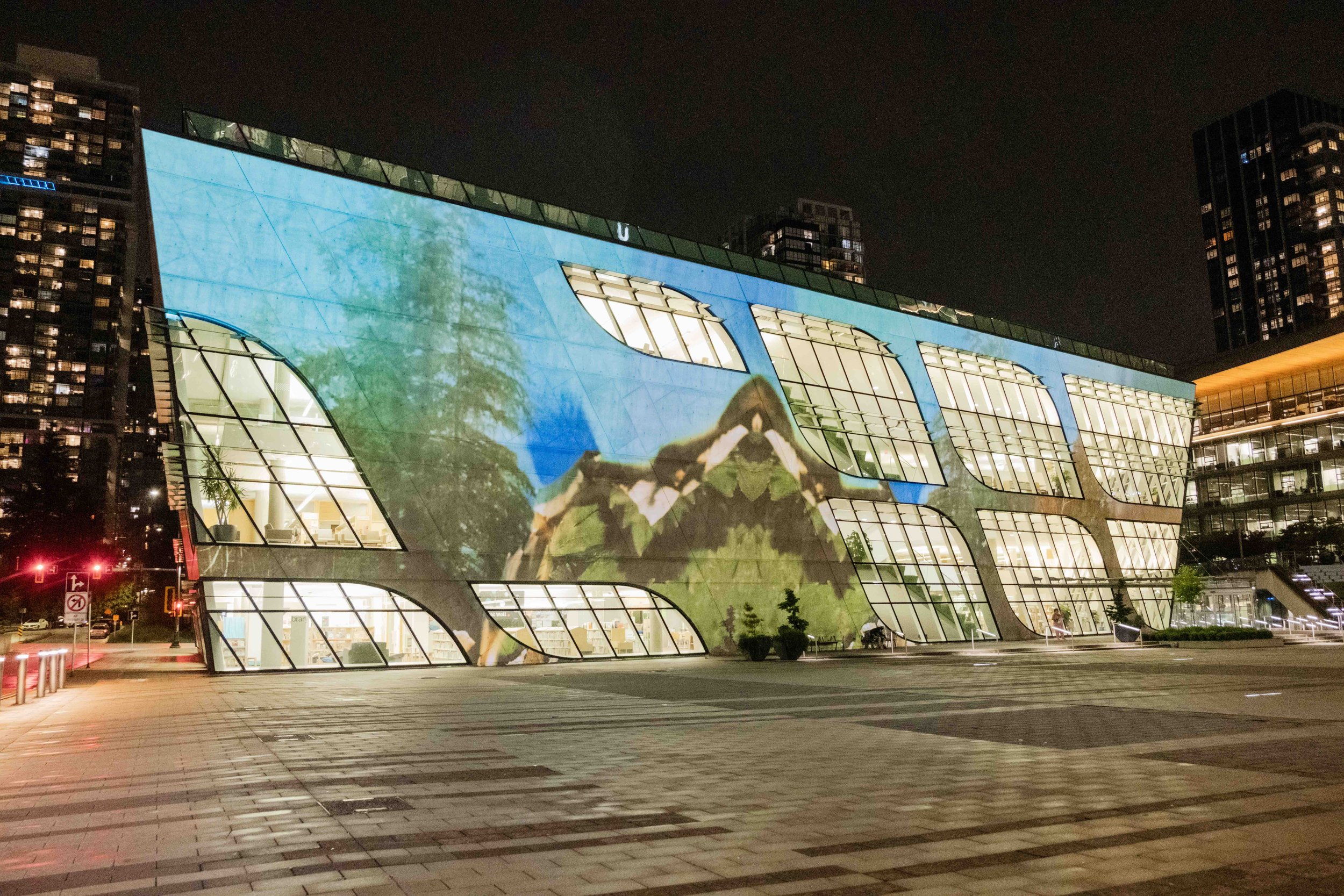Vancouver Art Gallery's photo exhibit Everything Under the Sun pays tribute to late collector Andrew Gruft's sharp eye for historic works and new discoveries
Iconic shots of New Orleans, Berlin, and Barcelona pair with the photo-conceptual and the irreverent
Yevgeny Khaldei, Berlin, Fall of the Reichstag, May 2, 1945, 1945, silver gelatin print, Collection of the Vancouver Art Gallery, Gift of Claudia Beck and Andrew Gruft
Vancouver Art Gallery presents Everything Under the Sun: In Memory of Andrew Gruft to September 11, as part of the Capture Photography Festival. Grant Arnold, Audain Curator of British Columbia Art, and Sophie Hackett, Curator of Photography at the Art Gallery of Ontario, host an online conversation about works in the exhibit on April 26 from 6 to 7 pm, as part of the Capture Speaker Series.
A SOVIET SOLDIER hoists his country’s hammer-and-sickle flag high atop the Reichstag, the rubble of Berlin beneath him, smoke billowing in the background.
A few months ago, when Vancouver Art Gallery’s Audain Curator of British Columbia Art Grant Arnold chose the iconic World War II image from hundreds donated by late local collector Andrew Gruft and his partner Claudia Beck, he had no idea how eerily timely it would be.
It’s part of the recently opened Everything Under the Sun: In Memory of Andrew Gruft exhibit, a show featuring dozens of standouts from the wide-ranging photos in the VAG permanent collection. Arnold, photo icon Jeff Wall, and Sophie Hackett, curator of photography at the Art Gallery of Ontario, have each chosen a photograph to highlight for deeper examination at the exhibit—and Arnold’s is the famous image by Yevgeny Khaldei, Berlin, Fall of the Reichstag, May 2, 1945.
Arnold had no idea that Russia would invade Ukraine and reduce many of its cities to rubble by the time the exhibit opened.
“Unfortunately, it looks a lot like Mariupol right now,” he observes, standing by the photograph.
The shot only became available to the West after the fall of the Iron Curtain. And it resonates now, not just for what it shows at face value. During a media tour of the show, Arnold reveals it was a photo staged for propaganda purposes that echo Russia’s information war now; smoke clouds were added after the fact for maximum effect. But there’s an even more sly alteration: Arnold says the man hoisting the flag also had two watches on his arm removed in the printing process. That’s because they were a sign of looting—bad P.R. for the Red army, punishable by death at the time, and a haunting parallel to reported ransacking of Ukrainians’ homes by unruly Russian troops in spring 2022, more than 80 years later.
“For Andrew [Gruft], there was still a sense of evil that was being defeated here,” Arnold suggests. He’s referring to the fact that Gruft’s own Jewish family had fled the Nazis in Poland in 1939, ending up in South Africa, where Gruft grew up and would go on to graduate in architecture from Cape Town University (before working in architecture in Rio de Janeiro and Vancouver).
Historic photos speak to different generations in different ways—a fact that is fascinatingly clear viewing the wide-ranging collection here. Works span a silver gelatin print of Benjamin Leeson’s 1894-96 portrait of a high-status Quatsino woman, Lady Warcas, and a large still from Ian Wallace’s hand-tinted video The Summer Script, from 1974.
The donations are drawn mostly from the 400 photo gifts from Gruft and Beck that Arnold says “radically changed” the face of the VAG permanent collection in 2004, giving it international significance for its photo-based art almost overnight.
“Even though photography had a really important role in our collection, there was not much historical work,” Arnold explains. “This work filled a big gap in the collection and was obviously of real interest to audiences here.”
Beforehand, spending five weeks at Gruft and Beck’s house sifting through the collection in 2003 provided some of Arnold’s fondest memories in several decades as a curator.
Jonah Samson, Untitled, 2015, 2 Van Dyke prints, Gift of Claudia Beck and Andrew Gruft.
Gruft and Beck started accumulating their vast collection when they ran the Nova Gallery on West Fourth Avenue from 1976 to 1982, at a pivotal moment for photo conceptualism worldwide and the Vancouver School of photography here. Once famously displaying Jeff Wall’s iconic illuminated The Destroyed Room in its front window (a work that’s now a draw at the National Gallery of Canada), the gallery became a crucial hub for the city’s artists, curators, and collectors. It mounted exhibitions by the likes of Frank, William Henry Fox Talbot, and then-little-known Vancouver artists such as Ian Wallace and Marian Penner Bancroft.
“It was fairly unusual for photographs to be shown in places like this,” Arnold says, referring to the VAG. “It was mostly marginal—and that’s changed drastically, of course.” The couple would continue to donate to the VAG long after 2004, their gifts eventually numbering around 700 for the permanent collection.
In Everything Under the Sun, Arnold has tried to reflect the fact that Gruft’s works not only include famous artists but that he and Beck had an eye for new discoveries.
“There are a lot of people who only collect works by people who are very established,” Arnold says, “but they also acquired stuff by artists who were really early in their careers.”
He points to a key work in this show by Cape Breton photo artist Jonah Samson, a rising talent now celebrated for retooling his vast collection of eclectic archival photographs into absurd, ironic, and often disturbing imagery. Here, 2015’s Untitled, rendered in rich Van Dyke Brownprint, features a woman grinning and waving at her shadow self in negative.
Robert Frank, Trolley–New Orleans, 1955, silver gelatin print, Collection of the Vancouver Art Gallery, Gift of Claudia Beck and Andrew Gruft
Amid the prizes in the exhibit is famed Swiss-born photographer Robert Frank’s Trolley–New Orleans 1955, an image that emblazons the dust jacket of his seminal book, The Americans. Shot in the French Quarter, it’s a chilling depiction of Southern segregation in the middle of the last century, with white passengers seen through the open windows in the front and Black passengers relegated to the back. Arnold points out that a white child at the midpoint rests her hand on a moveable wooden board that divided the sections; tellingly, that piece of wood could be shifted backwards if there were no more seats for white people on the bus. The expression in a Black passenger’s gaze is a haunting mix wistfulness, puzzlement, and alienation—as Arnold describes it, “It’s kind of like ‘When’s the [American] dream gonna happen?’”
Other photographers were new to Arnold, including late Spanish photojournalist Oriol Maspons, whose Toreo de Salon todas torrados en el barrio del Poble Sec endonde nacio, from 1958, pictures workers waving around makeshift capes, pretending to be matadors in a narrow street in Barcelona—“fighting ghost bulls”, as Arnold describes it. With two women watching from high above on a wrought-iron balcony and tiny children stopping to look on the sidewalk, it’s the kind of perfectly composed, time-capsule image that requires close inspection to take in its rich details.
But far from just historically serious photographs, there are images that are funny, irreverent, and often subversive, such as two self-explanatory 1970s works: Larry Clark’s Couple Shooting Up on a Bed and General Idea’s Union Jack-like polyptic Cocks and Flowers.
That cheeky, open-minded approach seems to be as much a tribute to Gruft as the tightly curated exhibit’s iconic battlefield and street images.
“A number of works explore gender and push the bonds of propriety,” Arnold says. “That was something Andrew liked, so there’s a bit of a naughtiness to them.”
















